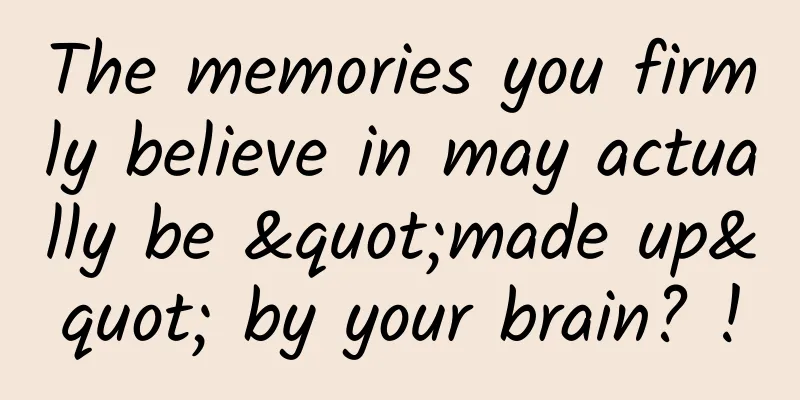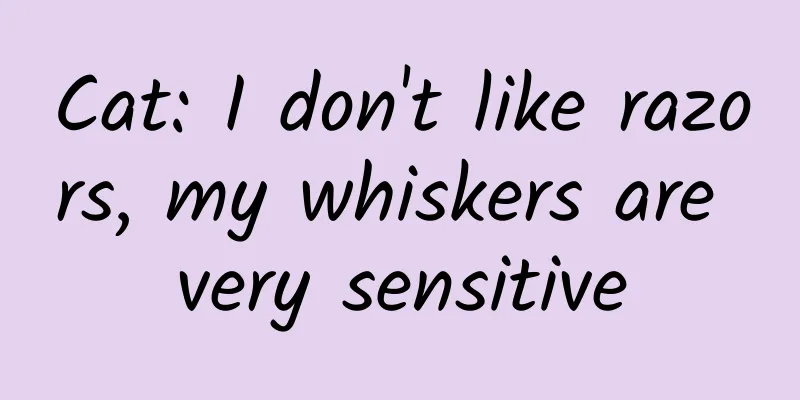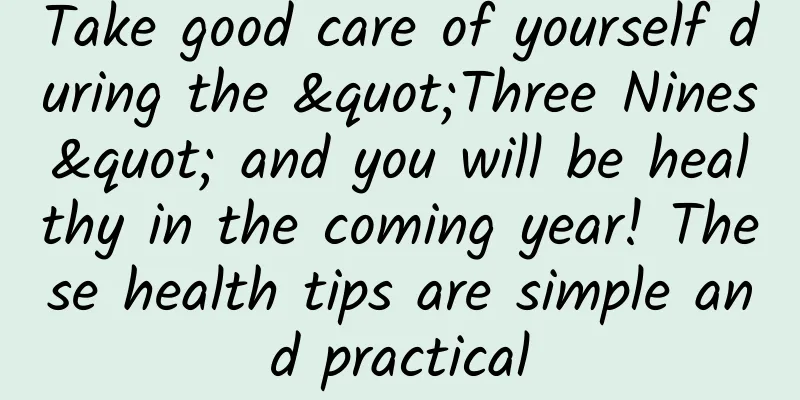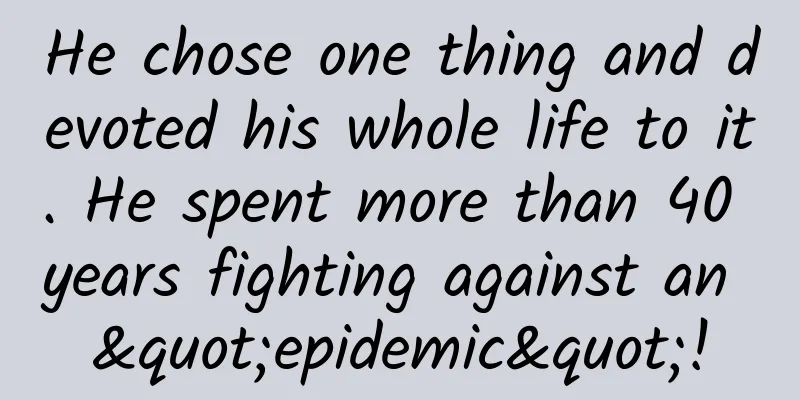The memories you firmly believe in may actually be "made up" by your brain? !

|
Author: Global Science At the beginning, we would like to tell a story. In the 1970s, American television broadcast an experimental entertainment program: they broadcast a very realistic crime show. The host then showed the audience six possible suspects and invited them to call in to identify the criminal. More than 2,000 people voted, but the results were shocking: each of the six people received roughly the same number of votes, with only 14% of the audience choosing the right one. However, only two minutes passed from the start of the show to the selection of the suspect. Why did so many viewers fail to remember the correct witness, but were able to confidently call to identify the victim? This aroused the curiosity of psychologists and also led to the topic of our chat today - "How the brain tampered with memory." The mechanism of memory Deep in the brain, in the hippocampus and adjacent brain regions, networks of neurons act like a memory machine. The axons and dendrites of these neurons receive and send electrochemical signals called neurotransmitters. These signals travel from one neuron to the next, across the axon and dendrite, and to the receptors of the next neuron. The pattern of these connections evolves with age, and as we repeatedly recall or revisit past events, synaptic connections weaken or strengthen. In the 1960s, neuroscientists noticed that when they sent the same pulse to a neuron twice, the neuron's response would be strengthened - as if the neuron "remembered" that it had received the signal. When they activated two or more neurons at the same time, these neurons would establish a connection and become close working partners. At this time, when a signal activated this group of neurons in the same pattern again, they would produce a stronger response. The theory is that when several neurons are repeatedly activated as a group, they recruit additional receptors to form newer, stronger synapses, and this strengthening of synapses is thought to be the basis for memory formation. Similarly, if several groups of neurons are activated at the same time, especially if this happens frequently, their synaptic connection patterns will gradually change, eventually connecting the groups of neurons together. Once the connections are formed, when one group is activated again, it will prompt the other groups to activate as well. Therefore, memory formation is a dynamic process that continues throughout our lives. Every time we recall an experience or encounter a similar event, this network is reactivated. The more we think about something, the deeper it is in the network and the easier it is to connect to other thoughts or memories. How memory goes wrong Yet these connections can be modified. Famous psychologist Elizabeth Loftus designed an experiment that demonstrated how our memories can be manipulated by later experiences: She told a group of volunteers that their relatives would tell them four things that happened when they were young. But in fact, three of these four things were true and one was false. For example, one of the volunteers, Chris, heard a story told by an older brother: I remember Chris was 5 years old, and my family was shopping in the University City Mall, but suddenly we found that Chris was missing. After a panic, we saw a tall, older man walking Chris in the mall. I remember that the man seemed to be wearing a flannel shirt. Chris was holding the man's hand and crying. Over the next few days, Chris gradually "remembered" the details of the disappearance. He remembered being scared and his mother telling him never to get lost again. He even remembered the man's flannel shirt. Two weeks later, Chris's memory became more vivid and detailed - even though the story was completely false. When Chris learned that one of the four stories was false, he did not guess that it was the story of getting lost in the mall. And 7 of the 24 people who participated in the experiment (29%) had similar false memories. Loftus concluded that our thoughts can really change the way memories are stored. Such false memories can be very disturbing, and psychology professor Svein Magnussen himself was a victim, believing at one point that he had committed a crime in his youth: He "clearly" remembers that when he went to attend his high school graduation ceremony, he drove a car from Oslo to Copenhagen with his high school classmates, but the car broke down. He said: "I clearly remember that we pushed the car off the bridge and watched it sink into the water. I even remember that there was such a wooden bridge." - It is illegal to abandon the car in this way, which brought him a great psychological burden. Until one day he met his high school classmate and learned the truth: his friend eventually sold the car to a junkyard in Copenhagen, and there was no such bridge in Copenhagen. When recalling the cause of this false memory, Magnusson suspected that they might have thought about this possibility or discussed it on the way, and then such a scene became a "real" memory in his mind. These stories actually show the important factors that play a role in constructing false memories. The longer the time, the more likely it is that false fragments will sneak into our memories. At the same time, other people's memories, or stories told by them, are also likely to replace our vague memories (especially in childhood) and become our memories. Why memory goes wrong Israeli researchers once found a woman with normal memory, filmed her for two consecutive days, and asked her to fill out questionnaires regularly in the following years to recall the details of these two days. At the same time, the researchers used fMRI (magnetic resonance imaging, which uses the magnetic resonance phenomenon of specific atomic nuclei in human tissue in a magnetic field to generate signals, and obtains the effects of a certain "slice" of the human body through encoding and reconstruction) to monitor her brain activity. It turned out that as time went by, her memory of the details became more fuzzy—normal. But most interestingly, her brain activity changed as time went by and the errors accumulated, and her hippocampus became less active when she recalled the events, while other adjacent areas, including the medial prefrontal cortex, became more active, which is associated with egocentric thinking—the memory became more focused on herself. Subsequent studies have found that in the process of memory representation, it may not be entirely the original neurons that are reactivated, but rather the location of activation will shift slightly in the cortex. For example, when we perceive a scene and remember it, it may be that the neural activity in the front of a certain brain area is more active, and when we begin to recall or imagine, it may be the neural activity in the back of this brain area that plays a role. There is a transfer between the two, but they are also closely related. That is, memory is not an absolutely objective record of our experiences like a camera, but it records our own role in these experiences, our feelings, emotions, and what that moment means to us. Based on this, our brain writes the first draft of memory. / In many cases, memory is not copying and replaying past feelings, but reconstructing the original memory based on semantic content. Implanting false memories Some researchers have used MRI to find that when we imagine something, our brain activity is very similar to when we experience similar things in real life. In fact, imagination, real memory and false memory appear very similar in our brain. The only way to distinguish them is how the brain classifies them as real or unreal, and memory is more like a form of imagination. In a way, the transfer of false memory to memory starts from imagination, and suddenly it is regarded as a real memory. So if imperfect memories can make us believe things that never happened, can memories be controlled by external forces? In fact, researchers have successfully implanted false memories in mice. We know that there are place cells in the hippocampus that can remember specific locations. The researchers placed a dot electrode where the place cells in the mouse's hippocampus are located. When the mouse moves to a specific location in the cage, they can record the corresponding neuronal signals. In addition, the researchers also implanted electrodes in the brain center responsible for reward. When an electric current is applied here, the mouse will get a sense of pleasure, which helps to create a memory trace. The researchers activated the reward center of mice when cells at a specific location were active while the mice were sleeping (because memory cells are activated during sleep for both mice and humans, making it easier for researchers to manipulate). Finally, although the mice had never received a real reward at this location, after such a memory was imposed during sleep, the mice returned to this location more frequently. As for humans, no one has tried to change people's memories in the same way - such research is not allowed. But through some psychological methods, researchers can indeed manipulate memory, just like the experiment we mentioned earlier. One of the experiments Loftus and his colleagues conducted was to convince volunteers that they liked eating asparagus. They created a false memory of them liking asparagus as a child, and the volunteers did start buying more asparagus. In addition, they asked volunteers to watch a movie about two cars colliding and then estimate the speed of the cars. One set of questions was "How fast were the two cars going when they collided?" The other set was "How fast were the two cars going when they collided?" The first group answered much faster than the second group, and some people in the first group even "remembered" the scattered glass fragments. We will find that we are living in such a vague state. Then the only memory we can be sure of is that we can never be sure whether a memory is true or false. This article is a work supported by Science Popularization China Starry Sky Project Team/Author Name: Global Science Review: Tao Ning Produced by: China Association for Science and Technology Department of Science Popularization Producer: China Science and Technology Press Co., Ltd., Beijing Zhongke Xinghe Culture Media Co., Ltd. |
>>: The State Council's Safety Committee Office reminds you to take precautions →
Recommend
Academician Wu Xinzhi: Spending a lifetime to get closer to the truth
The following article is from China Science Daily...
They are all technical experts, so why are the photos taken by my husband so ugly, while the photos taken by it are so natural and beautiful?
Audit expert: Xu Runsheng PhD in Artificial Intel...
KFC's "Family Bucket" Marketing Strategy
KFC’s marketing approach has always been wild. Th...
Taichi iOS 8.4 for Mac is now jailbroken
Taiji jailbreak team finally released the iOS 8.4...
What tricks do optimizers with a 10% CTR of information flow use when writing creatives?
As an information flow optimizer , I envy those w...
Will dogs turn into hot dogs in such a hot weather? No, but it is really dangerous
There are already many popular science reports te...
Tik Tok Promotion: 40 popular Tik Tok title templates, it’s hard not to be popular!
The reason why the title is important is that it ...
A must-have website for advertisers, operators, and marketers! (Super full version)
2019 has passed 1/4 … It's time to recharge F...
Embarrassing situation for Chinese mobile phones! Android system needs to be adjusted: non-certified devices cannot use Google Apps
According to The Verge, Google will make a major ...
Should we learn from Uber's innovative O2O model?
From Uber’s disruptive innovation to the vulgar a...
Website SEO diagnosis and optimization plan case: The website went from “0” to “2” in one month!
Case Description: I made this website myself. Aft...
Overseas Promotion and Marketing: How to Make Good Use of Tik Tok Promotion?
Generation Z refers to those born after 1995 and ...
The world's deepest underground laboratory has made important progress!
Wang Jing, Wang Chao, Shen Qiushi, Science and Te...
When doing user operations, it is important to learn some psychology!
1. Why write this article? I am often asked what ...
Product experience report of Baicizhan APP
As a learning app, Baicizhan has an unshakable po...
![[Popular Science of Chinese Military Technology] How do data links and combat clouds support modern warfare?](/upload/images/67f22fb7dc037.webp)








